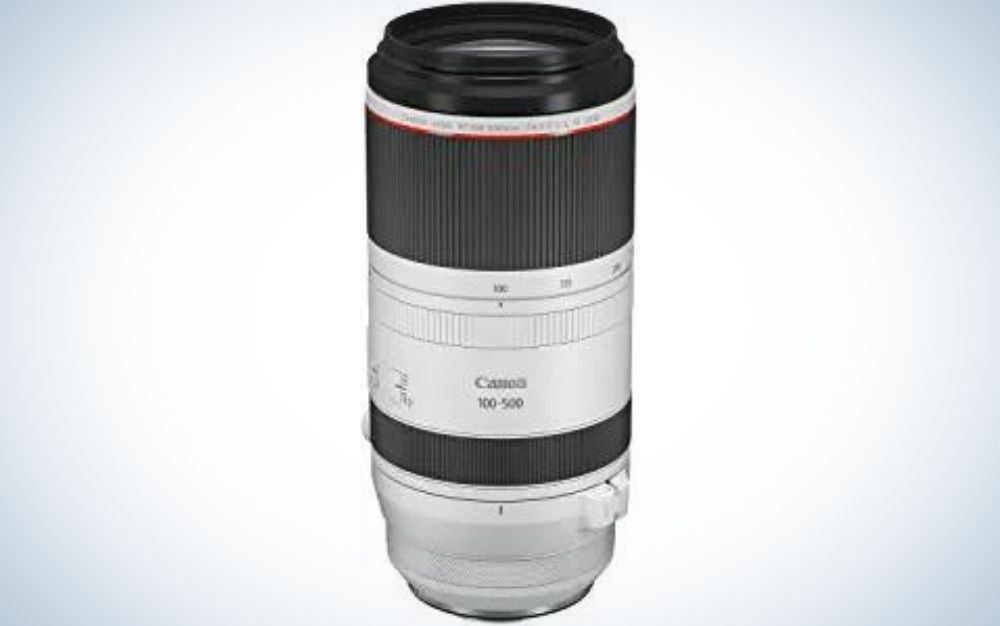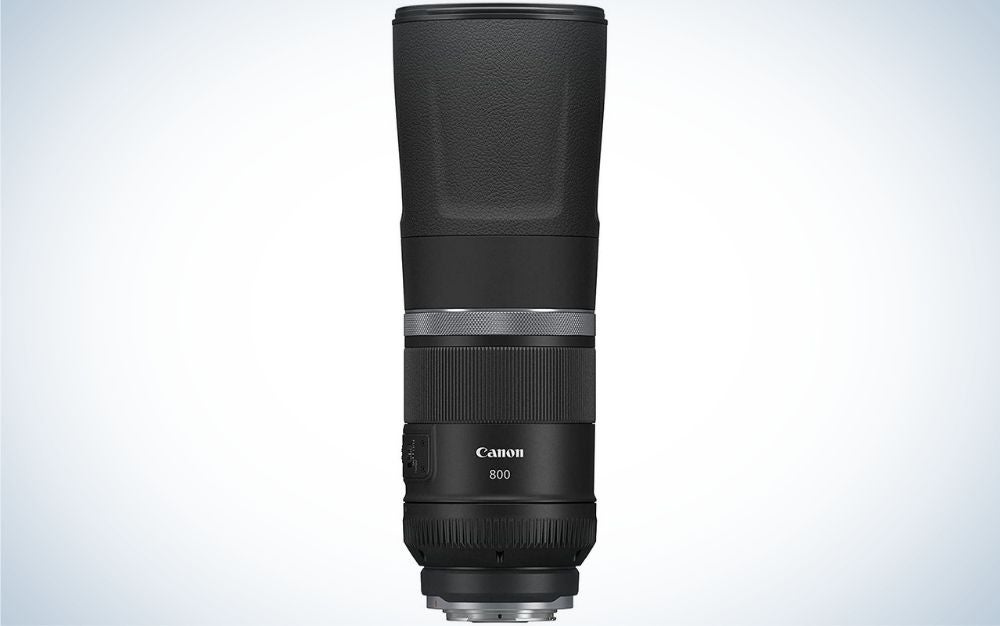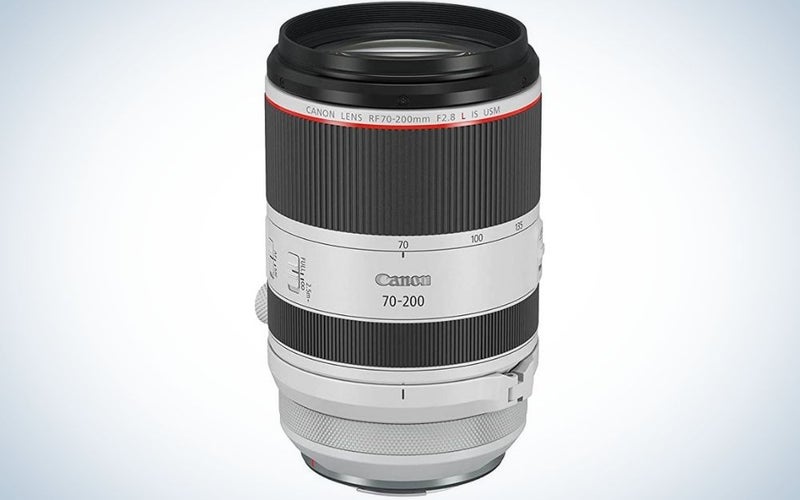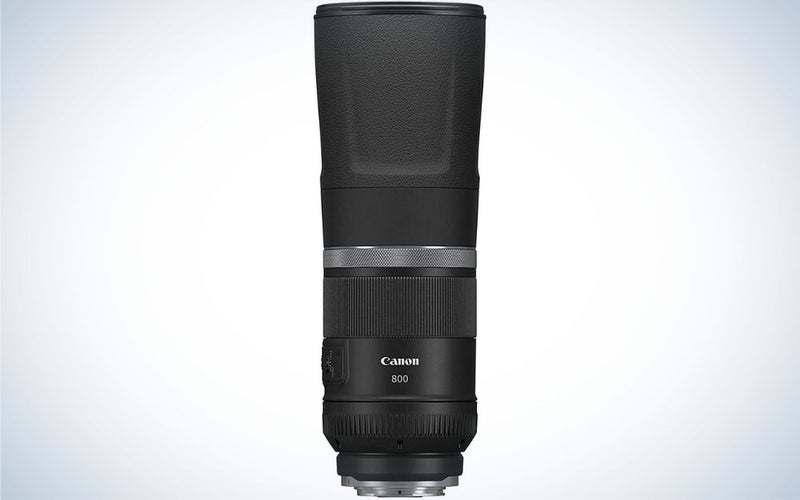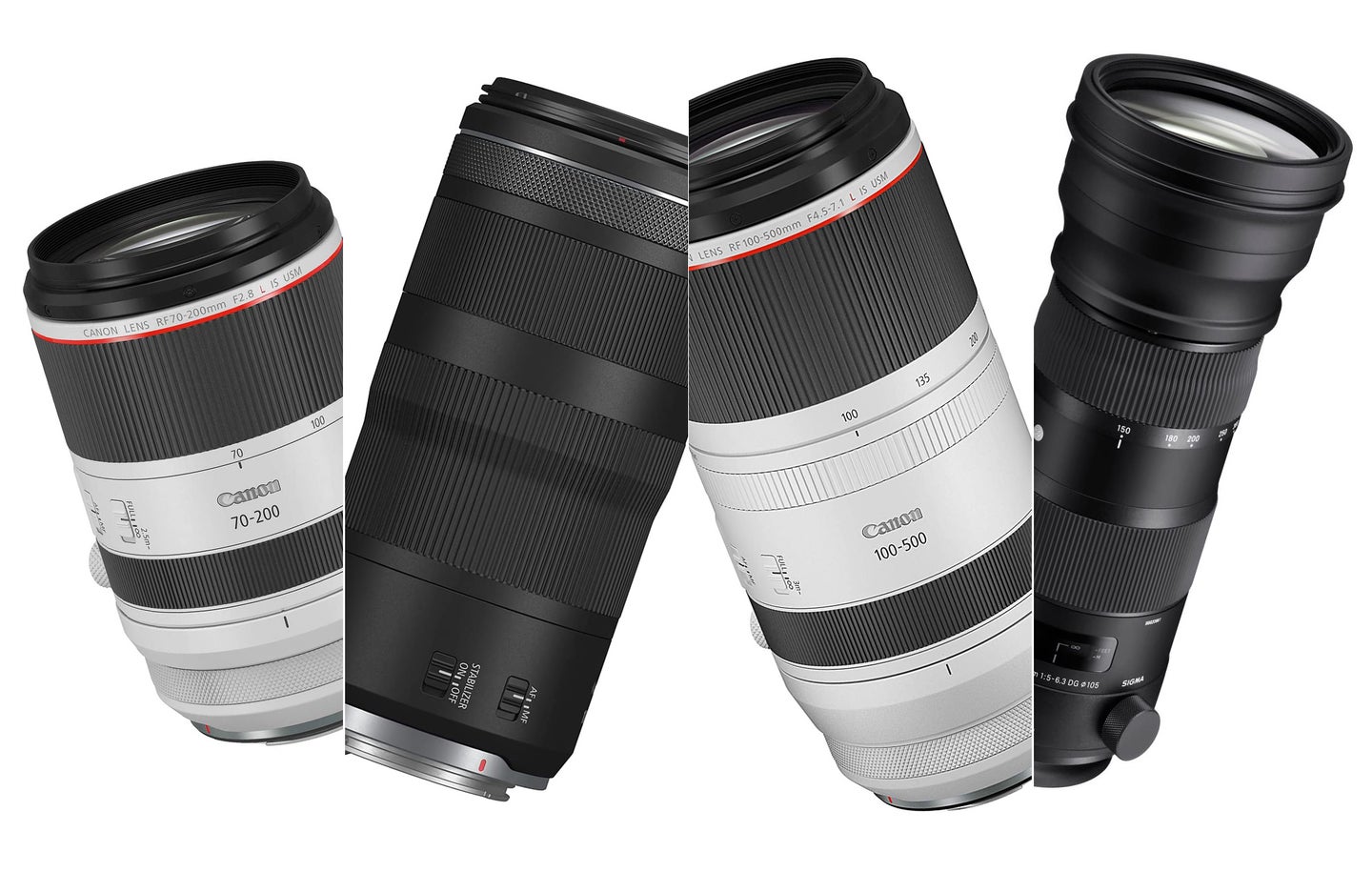
Telephoto lenses take up a huge market segment, with lenses ranging from 70mm up to and beyond 800mm. That’s a lot of variety to choose from! The best telephoto lenses allow for the maximum magnification of the intended subject while keeping it sharp, free of distortion, evenly lit, and easy to keep in the frame. The resultant images help to bring the viewer as close as possible to the subject, where it may have been impossible to do so with just our eyes. That’s a lot to ask of a lens, especially when the intended subjects are far away, very small, or both. Choosing the right telephoto lens depends greatly on your intended use. This is why there are hundreds of options to choose from, from the very niche super-telephoto primes to the more universal all-in-one superzooms. Here are some of the best telephoto lenses for Canon cameras, no matter your needs.
- Best overall: Canon RF 70-200mm f/2.8 L IS
- Best for wildlife: Canon RF 100-500 f/4.5-7.1L IS
- Best value: Canon RF 800mm f/11 IS
- Best third party: Sigma 150-600mm f/5-6.3 DG OS HSM Sports
- Best on a budget:Canon RF 100-400mm f/5.6-8 IS
Things to consider before buying a telephoto lens:
Telephoto lenses cover such a broad spectrum of photography and can be useful in many disparate scenarios. Factors such as focal length, zoom versus prime, weight, and size are not generally related to price. Whereas maximum aperture, sharpness, build quality, autofocus performance, and extra features most definitely are. Of course, there are trade-offs to having a smaller budget, but that’s where knowing what you’re going to use the lens for comes heavily into play. Understanding your specific use case for a telephoto lens will allow you to acknowledge which trade-offs will be acceptable.
Budget
The most important factor in deciding which telephoto lens to buy is your budget. The price of this category of lenses can vary wildly, from $100 to $20,000. So knowing what you have to spend will make a huge difference in the kind of lens you are able to acquire.
Generally, the most expensive lenses are very niche and at the pinnacle of optical quality and performance. The reverse can usually be said of the least expensive telephoto lenses. But the new RF mount lenses from Canon have shown us that you can have optical quality around the $1000 mark. The thing most lacking from these lower-tier lenses isn’t necessarily image quality, but features, performance, and build quality.
Your specific use case
Not all telephoto lenses are created equal, and this segment of the market has a vast and diverse population of lenses built for specific purposes. So before you sink your money into a lens that has been raved about for its performance, sharpness, price, value, etc., consider what you want to use a particular lens for.
Are you a birder? Are you spending most of your time stationary on a tripod or walking around? Do you need to shoot in low light? Do you shoot outdoors in inclement weather? Do you need it to fit in a carry-on bag? Are your subjects large, small, close, afar, or all of the above? Answering these questions to help figure out what you want a telephoto lens for will narrow down the correct lens to buy, so be specific.
Weight
Whether you intend on hand-holding or using a tripod, lens weight is a factor that you should not ignore. What good is a 7 lb 600, 800, or 1200mm lens when it stays in its case because it’s too cumbersome to set up? Some telephoto zooms weigh in excess of 6 lbs, so budget does not necessarily correlate with weight. It’s best to know your specific use case first, then determine what your arms can manage, either while shooting handheld or lugging around in a case between shoots.
EF VS RF Mount
Whether we like it or not, the RF mount is the future, and Canon has recently introduced some unique and innovative lenses for this mount. EF mount lenses do have the advantage in numbers; Canon alone has made 151 unique models since 1987. So why not just use an EF to RF mount adapter? There’s nothing inherently wrong with that logic, but that’s only a stop-gap measure as RF mount lenses have a clear advantage in technology. They can be lighter, smaller, have larger constant apertures and communicate faster, which in turn allows for better autofocus, and superior image stabilization.
Here are our picks for the best telephoto lenses for Canon in 2022:
Best Overall: Canon RF 70-200mm f/2.8 L IS
Canon
Why it made the cut: Canon has trimmed most of the weight and size off the traditional 70-200 without sacrificing any quality or performance.
Key Features
- Weight: 2.35 lbs / 1.07 kg
- Lens mount: Canon RF
- Maximum aperture: f/2.8
- Minimum focusing distance: 2.3 ft / 70 cm
Pros
- Tiny and light
- Extremely good optics
- Accurate, fast, and quiet autofocus
- Configurable control ring
Cons
- Expensive
- Not compatible with teleconverters
No photographer’s trinity of lenses would be complete without a 70-200mm. If you take the previous EF mount versions into account, what could Canon possibly offer as an improvement to this professional zoom? For a start, nearly 30% reduction in weight and size, with no loss in image quality. To put it bluntly, it is an amazing feat of optical engineering. It is the smallest 70-200 f/2.8 lens on the market today. Only the Sony FE 70-200mm f/2.8 GM OSS II is lighter by a paltry 25 grams or about five credit cards.
Speaking of credit cards, you might need to leverage them against the cost of this lens because this new kid on the block doesn’t come cheap. That 30% reduction in weight and size will cost you 30% more than the last EF 70-200 that Canon released. For some of you, the ultimate deal-breaker for this lens might be that it is not capable of accepting teleconverters of any sort. The rear element is so close to the back of the lens that any teleconverter simply does not have enough room to fit, which seriously reduces its flexibility in the field.
Putting teleconverter efficacy aside, that’s about the only bad news to report with this lens. Sure, the new design no longer has internal zooming, making people worrisome about dust and moisture intrusion. But Canon did this before and had great success with the EF 70-300mm f/4-5.6L IS. So dust and moisture intrusion should be the least of your worries. Overall this lens is a fantastic achievement; anyone with the budget will have no complaints about quality over the previous generations.
Best for wildlife: Canon RF 100-500 f/4.5-7.1L IS
Canon
Why it made the cut: A huge improvement over its predecessor, now with more range, lighter weight and increased performance in just about every metric.
Key Features
- Weight: 3 lbs / 1.36 kg
- Lens mount: Canon RF
- Maximum aperture: Variable f/4.5 to f/7.1
- Minimum focusing distance: 2.95 ft / 90 cm
Pros
- Lightweight
- Increased range
- Excellent image quality
- Configurable control ring
Cons
- Expensive
- Slower maximum aperture
When thinking of professional hand-holdable superzooms, it’s hard not to consider the 100-400mm range. Canon has made two of these iterations before, and both have been excellent and versatile lenses for the EF mount. This new RF “L” version somehow manages to pack an extra 100mm of focal length while at the same time reducing its weight when compared to the EF 100-400mm f/4.5-5.6L IS II. Just about everything in this lens is better than its predecessor. Autofocus is more snappy, thanks to the new dual Nano-USM, and image stabilization has increased to five total stops. And the added control ring allows adjustments of an assortment of exposure settings on the fly.
The slower f/7.1 maximum aperture might be suspect, but remember that the newer RF mount cameras aren’t constrained by light the same way as their EF predecessors. The new cameras allow for full focus across the frame at smaller apertures, even at f/7.1 and beyond. You can use teleconverters, albeit only over 300mm, when the rear element leaves enough room for them.
The only real negative of this lens is the price, which is indicative of its recent release and added features. However, canon RF body owners should have a hard time overlooking this lens for handheld wildlife shooting as its handling and performance easily eclipses the experience of using prior models.
Best value: Canon RF 800mm f/11 IS
Canon
Why it made the cut: If you’ve ever wanted to own 800mm of focal length without selling your car, mortgaging your house, or sacrificing quality, this the one to get
Key Features
- Weight: 2.77 lbs / 1.26 kg
- Lens mount: Canon RF
- Maximum aperture: f/11
- Minimum focusing distance: 19.69 ft / 6m
Pros
- Impressive image quality
- Small and light
- Insane value
- Excellent autofocus and image stabilization
Cons
- Very slow maximum aperture
- Extreme minimum focus distance
Canon’s RF 800mm f/11 IS is easily one of the more audacious lens offerings from such a prominent manufacturer. Canon is no stranger to making 800mm lenses, but it’s rather strange at this low price point. The RF 800mm is impressively sharp, compact, lightweight, and has the autofocus and image stabilization of lenses above its tier. There is no lens with a better value per millimeter on the market today. It also accepts teleconverters, so you could have a 1600mm, autofocusing f/22 lens for not much more.
The RF 800mm obviously has its shortcomings, the most glaring being the constant f/11 aperture. This lens needs a lot of light to maximize autofocus performance and minimize motion blur. Other drawbacks aren’t so severe. The minimum focusing distance is on the extreme side at 20ft, but that shouldn’t be an issue for birding and wildlife shooting. This lens is not weather-sealed, but since it requires a lot of light, shooting in poor weather would be unlikely.
Some people might find the need to extend and lock the barrel before shooting a nuisance, but this also allows it to be extremely portable given its immense reach. All things considered, if you can imagine yourself in an environment with enough light, this lens should be on your radar.
Best third party: Sigma 150-600mm f/5-6.3 DG OS HSM Sports
Sigma
Why it made the cut: Sigma’s 150-600mm Sport is an excellent value with superb build quality, extreme zoom range, and professional level performance.
Key Features
- Weight: 6.29 lbs / 2.86 g
- Lens mount: Nikon F
- Maximum aperture: Variable f/5 to f/6.3
- Minimum focusing distance: 8.53 ft / 2.6 m
Pros
- Huge zoom range
- Rugged build
- Great value for money
- Superb image quality
Cons
- Very heavy
- f/6.3 starts around 320mm
While the RF mount represents the future of Canon’s lenses, third-party development of the RF mount has lagged since its introduction in 2018. So to recommend a third-party lens for Canon, we have to look to the past and the legacy EF mount. Sigma introduced the 150-600mm Sport in 2014, and it still represents the pinnacle of third-party telephoto lens design.
It’s a beast at over six pounds. For a lens that looks and feels hand-holdable, it most certainly is not and would benefit from proper mounting on a gimbal or sidekick. However, what it lacks in handling, it more than makes up for in robust build quality with its superior splash and dustproof construction. Even the lens hood boasts an all-aluminum build with a rubberized coating near the front to prevent damage when sitting on rough surfaces.
The features packed into this lens are just as incredible as its build quality. For instance, you can operate it as a traditional twist zoom or a push-pull, and you can engage the zoom lock at any focal length. The elements that make up the lens design are veritably resistant to flares, chromatic aberrations, and even water and oil (on the front and rear elements).
The image quality is extremely consistent throughout the focal range. And the autofocus and image stabilization performance are exceptional, silent, and accurate. You can also customize this lens through Sigma’s USB dock, and they also offer a lens mount conversion service to switch between Canon, Nikon, Sony, Sigma, and Pentax. What’s more, Sigma includes a robust padded case and strap with the purchase.
Best on a budget: Canon RF 100-400mm f/5.6-8 IS
Canon
Why it made the cut: The Canon RF 100-400mm has surprisingly competent image quality, performance, and features packed into such an inexpensive lens.
Key Features
- Weight: 1.4 lbs / 635 g
- Lens mount: Canon RF
- Maximum aperture: Variable f/5.6 to f/8
- Minimum focusing distance: 2.9 ft / 88 cm
Pros
- Great value
- Small and light
- Surprising image quality
- Great autofocus and image stabilization
Cons
- Slow maximum aperture
- Lens hood and tripod collar are not included
The biggest problem with telephoto lenses, in general, is the overwhelming price most of them command. In the past, telephoto lenses with at least 400mm of range have either been competent and expensive or sacrificed too much in image quality and performance to be good budget buys. But it seems that Canon is on a roll with the development of interesting lenses that somehow manage to break the quality for price barrier. The new RF 100-400mm is the latest in a slew of wins for Canon’s consumer line. This lens packs enough image quality and performance features that seasoned photographers will appreciate while at the same time significantly lowering what has always been a prohibitively high price point in this focal range.
It lacks some creature comforts reserved for higher tier “L” lenses, but that is to be expected at this lower price bracket. It has a relatively slow f/8 maximum aperture at 400mm, which means you’ll need a bit more light to get the proper performance out of it. But it also has Canon’s new quick and quiet Nano-USM focusing motor and 5.5 stops of image stabilization.
What it lacks in weather sealing and build quality, it makes up for with its small stature and light weight. Some might call the image quality pedestrian when compared to Canon’s RF 100-500mm, but remember that this lens is over four times less expensive. There is no lens available at this price with this range in either EF or RF mounts. This lens isn’t complacent; it convincingly establishes itself in a notoriously tough focal range with a lack of clear competition.
FAQs
Q: What’s the difference between telephoto and zoom lens?
There is no difference between telephoto and zoom lenses, depending on the lens, as you can have a zoom telephoto lens. Telephoto refers to the lens’s focal length and is any lens over 70mm. These lenses allow you to make subjects appear closer to the camera than they actually are.
Zoom lenses have a range of focal lengths but do not refer to a specific focal length. So, you can have a zoom lens that is entirely wide angle, such as a 14-24mm, or one that covers wide, normal, and telephoto, such as a 24-70mm, and even telephoto only zooms, such as 100-500mm.
The opposite of a zoom lens is a prime lens. Prime lenses have only one focal length with no ability to zoom in or out with the lens itself.
Q: Are Primes better than Zooms?
That depends entirely on your specific use case. Prime lenses can be harder to use because what’s in the frame is dictated by the lens’ distance to the intended subject. You cannot zoom in or out from a stationary position; your body has to be the zoom mechanism for correct framing. Telephoto primes can also be prohibitively expensive, but with that expense comes the pinnacle of lens performance.
Telephoto zooms have a range of focal lengths, allowing you to alter compositions on the fly. The range of focal lengths means you can save weight and space in your camera bag and alleviate your budget at the expense of some reduced sharpness and light gathering.
Q: Is 300mm enough for wildlife?
300mm is enough for wildlife photography. It will allow you to keep your distance from wildlife to avoid scaring them off while still making them the focal point of your image.
Q: Does aperture matter?
Again this will depend on your use case and budget. Lenses with lower maximum apertures (more gathering capability) will generally be more expensive but perform better in lower light situations. If you want a blurry background to separate and enhance your subject, there’s nothing inherently wrong with an f/11 lens; your subject just has to be far enough away from the background to make it blurry. It really helps to know what you will be shooting and under what conditions before you take the plunge and buy a lens that doesn’t match your intended use.
Q: What about teleconverters?
In theory, teleconverters are a simple, affordable fix for increasing the focal length of any lens. But in reality, teleconverters are not the saviors they are made out to be. They aren’t some magic device that can cheat physics and come with some serious drawbacks.
In addition to increasing the apparent focal length, they also reduce the amount of light entering the camera. A 1.4x teleconverter loses 1-stop of light, and a 2x teleconverter loses 2-stops of light. You can mitigate the loss of light by increasing the ISO to compensate, but depending on the lens, using a teleconverter can make autofocus slower or stop working altogether.
The biggest problem with using teleconverters is the loss of sharpness inherent in using them. Even the most expensive lenses suffer from image degradation with the use of teleconverters, and the less expensive the lens, the more image degradation it will experience. This isn’t meant to dissuade you from using them, but it is meant to remind you of their effects on image quality and camera performance.
Methodology
There were a lot of factors that went into determining the best telephoto lenses for Canon cameras. Although budget was the primary concern, perhaps equally important was lens mount type. Concerning Canon specifically, they have introduced a large spectrum of telephoto RF lenses across all budgets, and it’s no coincidence that those lenses are featured prominently here.
The RF mount has allowed Canon to dramatically increase the performance and features of their telephoto lens lineup while at the same time reducing their weight and size. In addition, the RF mount has enabled Canon to introduce some truly unique lenses, which would not have been possible before due to the limitations of the EF mount.
Final Thoughts
Telephoto lenses cover such a large swath of photographic applications and can be highly niched with prime super telephotos or extremely broad with telephoto zooms. Understanding what you want to shoot and the environment you’ll be shooting in will be the biggest key in determining which telephoto lens to invest in.
The post Best telephoto lenses for Canon in 2022 appeared first on Popular Photography.

